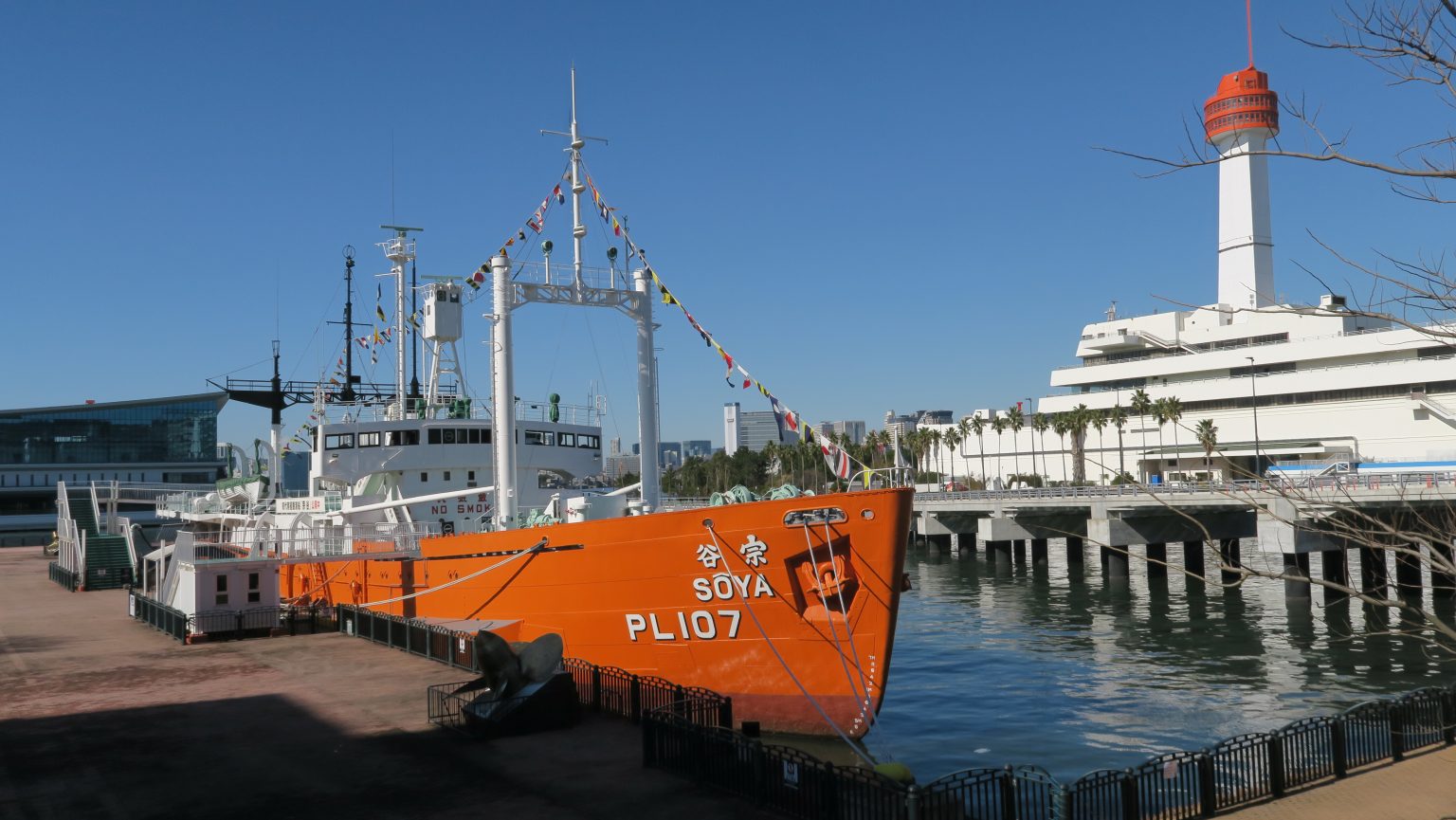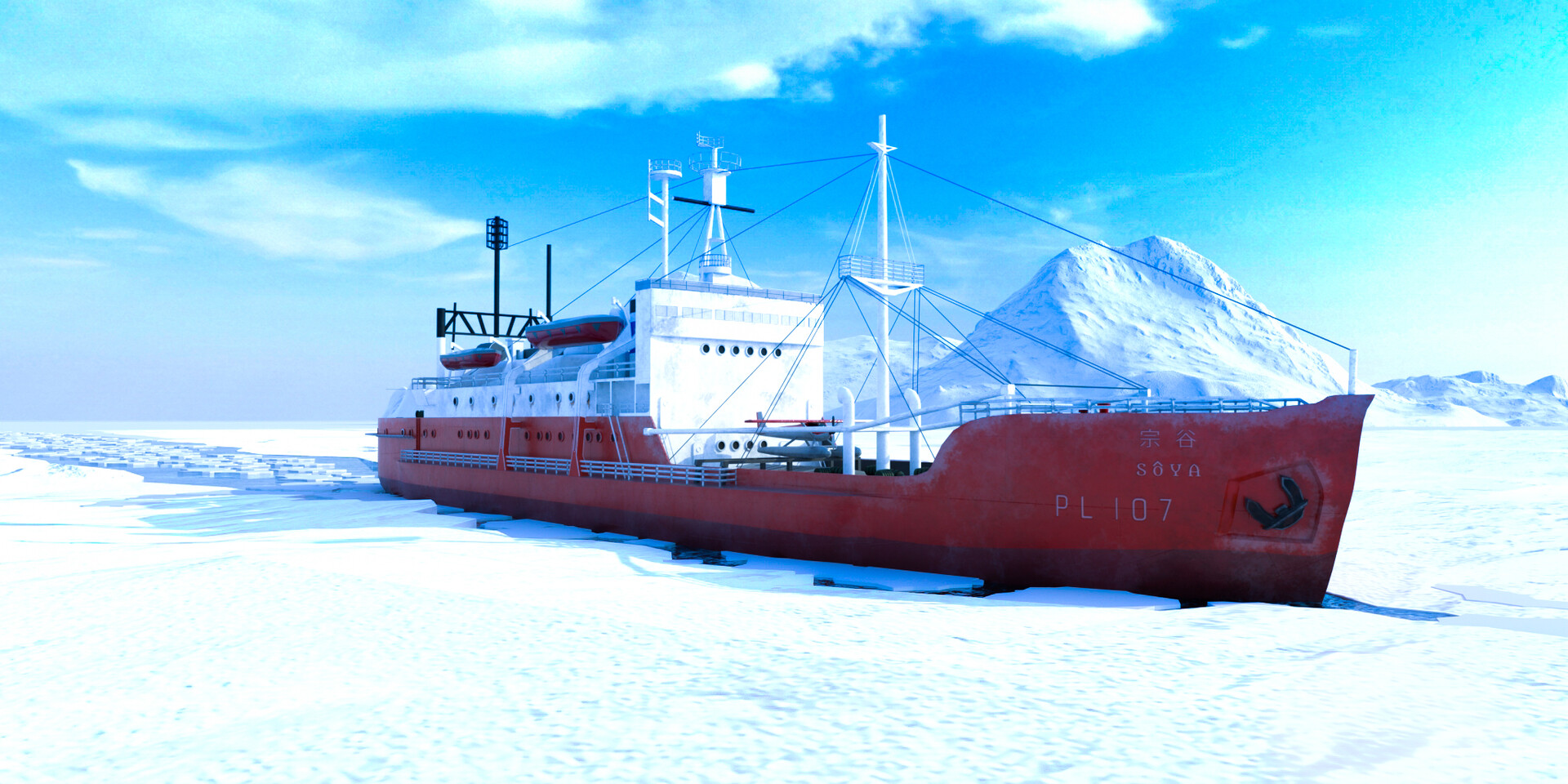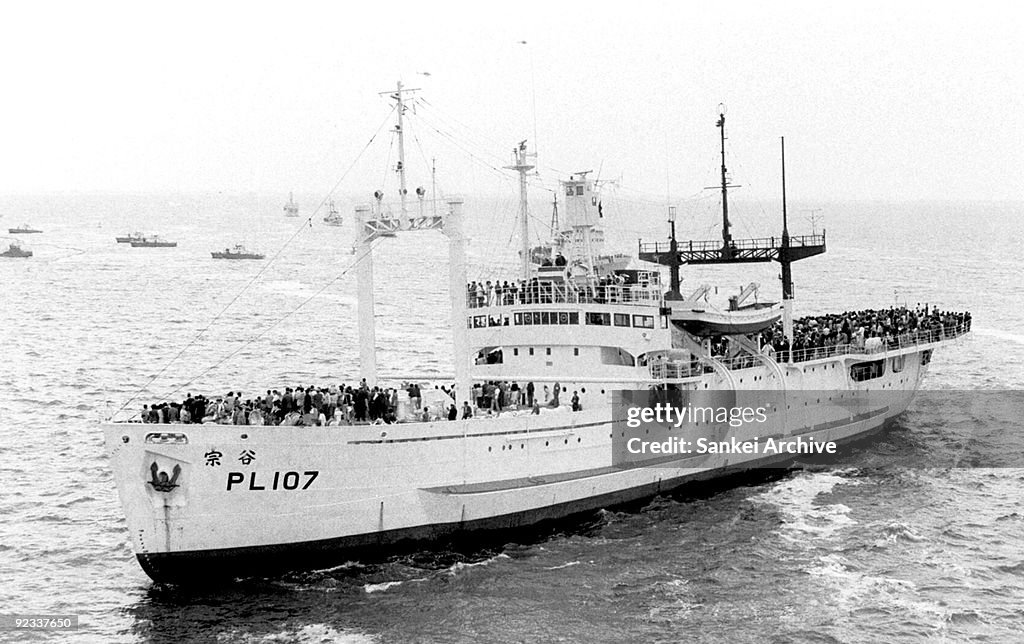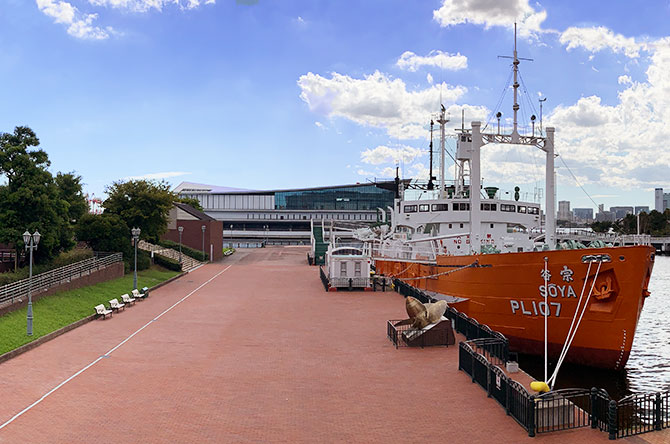

Soya (PL107) is a Japanese icebreaker serving as a museum ship in Tokyo after a long and historic service covering some of the historical events of the 20th century. Named after Soya Subprefecture in Hokkaido.
In November 1939, the Imperial Japanese Navy requisitioned Chiryo Maru for national service. In February 1940, she was renamed Soya, a name formerly held by the former Varyag, an armored cruiser seized from Imperial Russia, but returned to Japan in 1916.

In May 1942, she participated in the Battle of Midway (Operation "MI"), where she was assigned to Miyamoto Sadachika's 16th Minesweeper Unit (along with No. 8 Showa Maru, No. 3 Tama Maru, No. 5 Tama Maru, No. 7 Showa Maru, No. Showa Maru, CH-17 and CH-18 minesweepers; merchant ships Meiyo Maru and Yamafuku Maru).
She survived WWII, albeit with more close calls. In January 1943 Soya was attacked by USS Greenling. The torpedoes either missed or proved a dud: Soya's crew hoisted an unexploded torpedo onto the deck in celebration.

In Operation Hailstone of February 1944, aircraft from TF58 attacked the Japanese anchorage at Truk, sinking 41 Japanese ships. S?ya escaped, but she ran aground while she did so; 10 crew members were killed.
On 26 June 1945 the submarine USS Parche attacked a convoy escorting Soya and other transports from Yokohama to Hakodate, sinking one convoy and disabling one transport. On 9 August 1945, Soya was at anchor in Onagawa Bay as part of a flotilla with other ships when British bombers attacked from the air, sinking at least two.

Soya was fully decommissioned in 1978. Her last mission was a farewell voyage to the communities she had served, including the port of Hakodate, and photographs exist from this period of well-wishers swarming the ship before her departure .
In 1979, Soya was moored alongside the Maritime Science Museum, Tokyo, and she remains open to the public as a museum ship, open daily and generally only closed when typhoons threaten Tokyo.

She remains in largely original condition. Her propellers have been removed and placed on deck, but her interior is largely intact from her days of Antarctic exploration. However, as a result of modifications made in the 1950s, her superstructure has changed considerably from her appearance during World War II.

Gone are the high funnel and aft davit assembly, while the addition of a helicopter landing deck and taller forward railings give her a more muscular appearance than the freighter she started with.
Museum Ship - Japanese Icebreaker Soya (PL107) - Virtual Tour 360°
Address: 3-1 Higashiyashio, Shinagawa City, Tokyo 135-8587, Giappone
Phone:
Site:
Location inserted by
Culturalword